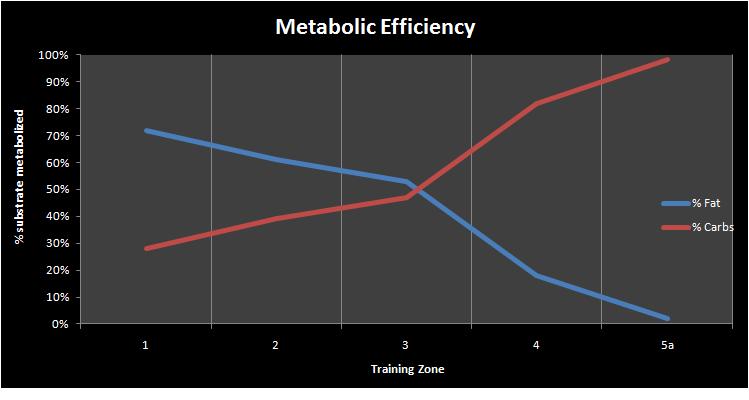Exercise Metabolic Efficiency
WHAT IS METABOLIC EFFICIENCY?
Exercise Metabolic Efficiency is defined as the calories and substrates an athlete burns at different intensities during exercise. Like the RMR, this data is determined through gas exchange analysis. However, for exercise metabolic rates the analysis is performed during an exercise test of graded intensities. The test can be performed on the stationary bike, treadmill, or rowing machine. This test reveals how many calories from fats and carbohydrates an athlete burns at different exercise intensities. This information can be very valuable to an athlete because it quantifies their reliance on fats and carbohydrates for race situations, and allows the athlete to plan accordingly.
For a more detailed explaination of Metabolic Efficiency check out this Triathlete Magazine Article
WHAT TO EXPECT DURING THE TEST
A complete metabolic exercise profile is about a 60 minute test at sub-maximal effort. Gas exchange is measured by wearing a mask fitted with valves routing expired air into a gas analyzer. For the most accurate training zone metabolic profile, blood lactates can be taken during the test to identify the athlete’s lactate threshold.
Metabolic efficiency can also be estimated during a VO2 max test. However, because the time spent at different intensities is limited during VO2 max test, we recommend the full 60 minute test for the best metabolic profile information.
The metabolic efficiency sheet will include your total calories burned per hour, carbohydrates burned per hour, and fats burned per hour for each training zone in both table and graph form. An example of this is provided below:

